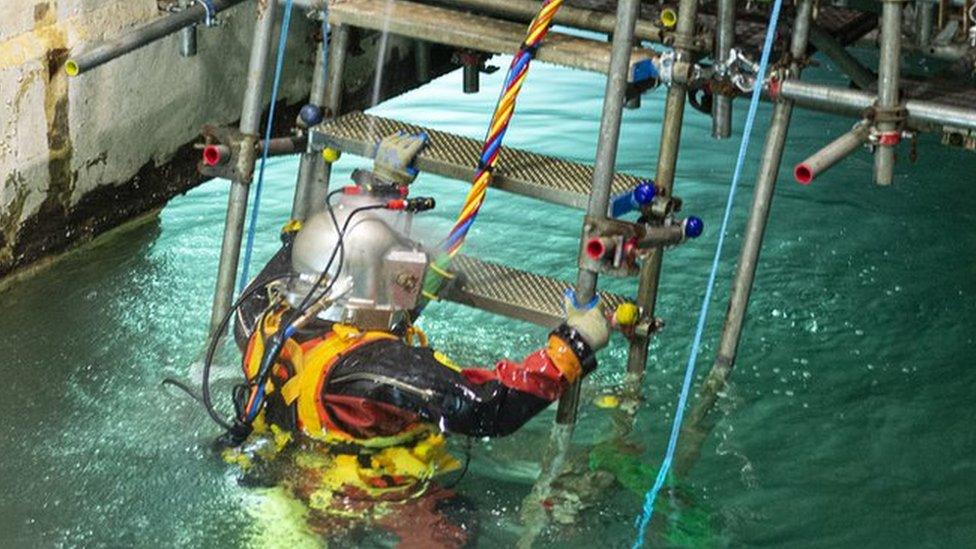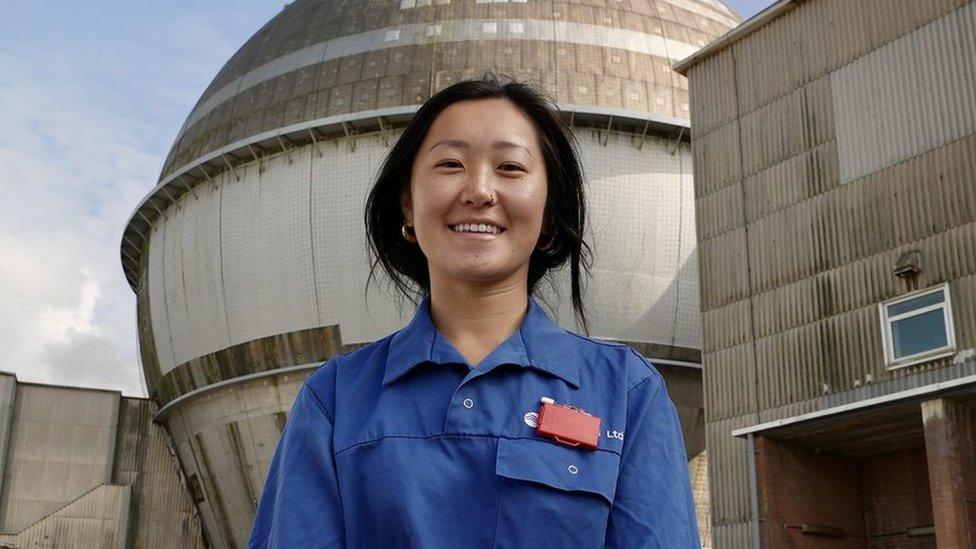Sellafield nuclear waste retrieval gets under way
- Published

The retrieval of waste from the silo is regarded as a "national priority"
Some of the UK's oldest nuclear waste has been removed from its original storage facility at Sellafield in what has been described as a "momentous" step.
The material, from the first nuclear reactors built in Cumbria, had been in a concrete silo built in the 1950s.
A robotic arm was used to retrieve the hazardous material and load it into a specially designed stainless steel box.
The waste is to be transferred to a newly built facility at the site.
Designed as a "locked vault" with no plan for retrieving its contents or decommissioning the building, the Pile Fuel Cladding Silo, external is the oldest waste store at Sellafield.
Material was deposited in it until the early 1970s and amounts to the equivalent of approximately 30 double decker buses, the Office for Nuclear Regulation (ONR) said.
The transfer of the waste to a storage unit meeting modern safety standards was a "national priority", it added, with work by Sellafield Ltd having got under way after "many years" of planning.

The Sellafield site employs more than 11,000 people
Alan Wylie, the ONR's superintending inspector, said there had been "a rigorous and detailed assessment" of the safety case ahead of granting permission for the retrieval.
Removing the waste - consisting of metal casing that surrounded uranium fuel rods - from the silo's six compartments is expected to take about 20 years to complete.
Sellafield Ltd and the Nuclear Decommissioning Authority said the project represented "one of the most complex and difficult decommissioning challenges in the world".
Retrievals from the silo "mark a significant step forward in the clean-up and decommissioning of one of the most hazardous buildings on the Sellafield site," they added.
Located near Seascale, in west Cumbria, Sellafield is one of the largest nuclear sites in Europe.
No longer generating electricity, work focuses on the remediation of its nuclear waste legacy.

Follow BBC North East & Cumbria on Twitter, external, Facebook, external and Instagram, external. Send your story ideas to northeastandcumbria@bbc.co.uk, external.
Related topics
- Published30 March 2023

- Published27 September 2022

- Published1 April 2022

- Published29 November 2021
